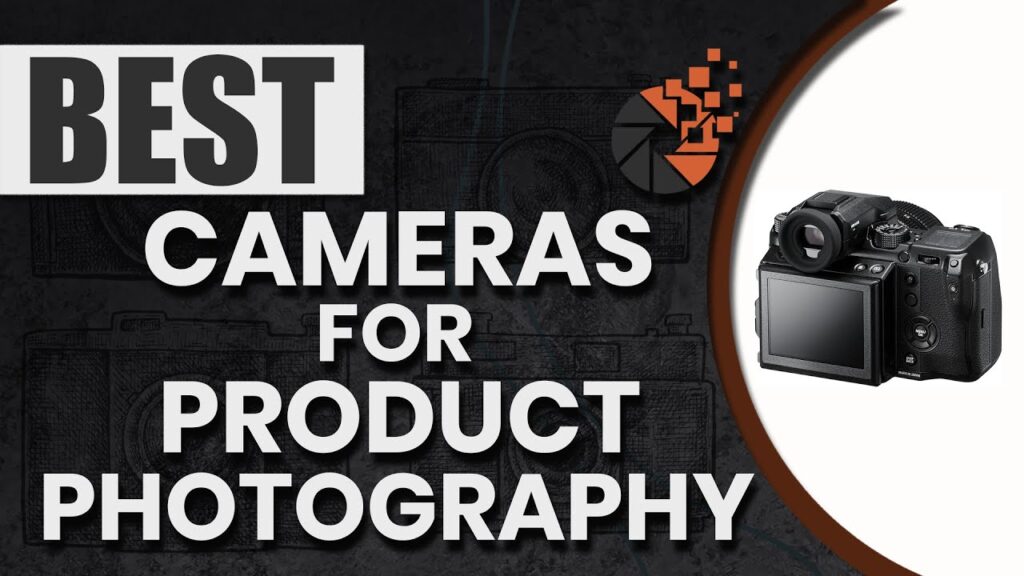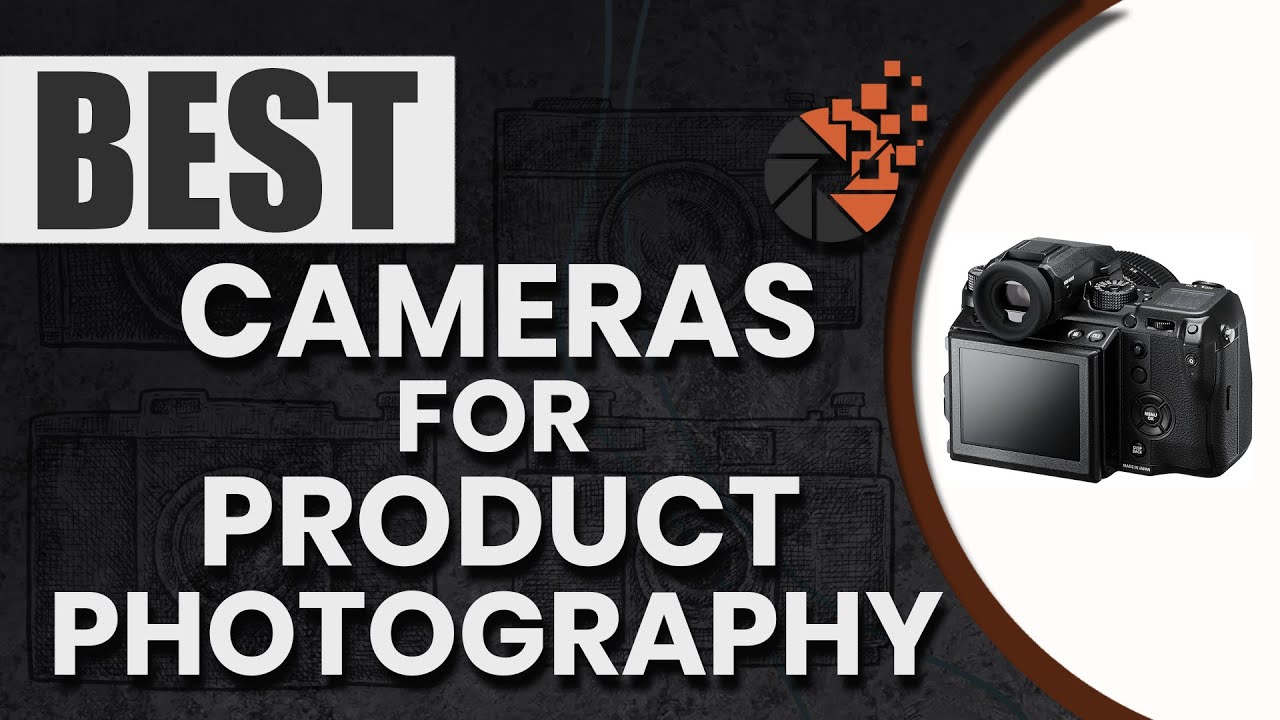Product photography plays a crucial role in showcasing items in an enticing and accurate manner, directly influencing consumer purchasing decisions. If you’re in the market for the perfect camera to elevate your product photos, you’re in the right place. This guide emphasizes the importance of high-quality cameras and how they can enhance your photography skills to capture the intricate details that matter.
In this article, you’ll discover the top five cameras recommended for product photography, each selected for its unique features and performance. Whether you’re a beginner or a seasoned professional, finding the right equipment can make a significant difference. Get ready to explore cameras that will help you highlight the benefits, quality, and aesthetic appeal of every product you shoot.
Understanding Product Photography
Definition and Purpose
Product photography is a specialized branch of photography that focuses on capturing images of products in a way that is both appealing and accurate. The goal is to showcase the product in the best light possible, highlighting its features, benefits, and utilities. This type of photography is often used in advertising, catalogs, and e-commerce websites to entice potential buyers by providing them with a clear and enticing view of the item.
Importance of High-Quality Images
High-quality images can significantly impact the success of a product. Crisp, clear photos can attract potential buyers, convey professionalism, and build trust. They help in illustrating the product’s quality, texture, dimensions, and usability, encouraging customers to make a purchase. On the other hand, low-quality images can make a product appear less valuable and turn away potential buyers, tarnishing the brand’s reputation.
Technical Requirements
Product photography requires specific technical capabilities in a camera to achieve professional results. Essential requirements include high resolution for detailed images, a reliable autofocus system for sharp pictures, excellent low-light performance, and accurate color reproduction. The ability to shoot in various lighting conditions and having appropriate connectivity options for easy file transfer and sharing are also important features to consider.
Factors to Consider When Choosing a Camera for Product Photography
Image Quality and Resolution
The image quality and resolution of a camera are paramount in product photography. High resolution ensures that even the smallest details of the product are captured clearly. This is particularly important for e-commerce platforms where consumers rely on product images to make purchasing decisions.
Camera Type (DSLR, Mirrorless, Point and Shoot)
Choosing between a DSLR, mirrorless, or point and shoot camera largely depends on your specific needs and budget. DSLRs offer excellent image quality, a variety of lenses, and robust manual controls. Mirrorless cameras provide similar quality with a more compact design and faster shooting speeds. Point and shoot cameras are convenient and often come with built-in features that make them user-friendly but may lack the flexibility of interchangeable lenses.
Sensor Size and Type
The sensor size and type significantly affect image quality, depth of field, and low-light performance. Full-frame sensors typically provide better image quality and dynamic range compared to smaller sensors. APS-C sensors are smaller but still offer good performance and are often found in mid-range and entry-level cameras.
Low Light Performance
Low light performance is crucial if you plan to shoot indoors or in environments where lighting may not be ideal. Cameras with high ISO capabilities and low noise levels at higher sensitivities are better suited for such conditions. This ensures that your images remain clear and sharp even in challenging lighting.
Ease of Use and Ergonomics
A user-friendly camera with intuitive controls and a comfortable grip can make the shooting process smoother and more enjoyable. Consider the camera’s layout, menu system, and the accessibility of its key features. This can reduce the learning curve for beginners and enhance the overall workflow for professionals.
Budget: Balancing Cost and Features
While it’s tempting to go for the best camera available, it’s essential to balance your budget with the features you actually need. High-end cameras offer a plethora of features, but if you’re just starting, a mid-range camera with essential capabilities might be more appropriate. Prioritize features like resolution, lens compatibility, and ease of use when choosing within your budget.

This image is property of i.ytimg.com.
Top Camera Features for Product Photography
High Resolution and Megapixels
High resolution and a greater number of megapixels allow you to capture detailed images that can be cropped or enlarged without losing quality. This is especially important in product photography where every detail matters.
Lens Compatibility and Options
Having a variety of lenses at your disposal can significantly enhance your creative options. Look for cameras that offer a wide range of lenses, from macro to prime lenses, to suit different types of product shots.
Autofocus System and Accuracy
A reliable and accurate autofocus system ensures that your product shots are sharp and clear. Look for cameras with a fast and precise autofocus system, which can be particularly critical for capturing intricate details.
ISO Range and Low Light Capabilities
A broad ISO range gives you the flexibility to shoot in various lighting conditions. Cameras with good low light capabilities allow you to maintain image quality without excessive noise when the lighting isn’t ideal.
Image Stabilization
Image stabilization is crucial for reducing camera shake, especially in low light conditions or when shooting with longer focal length lenses. This feature ensures that your product images remain sharp and clear.
Connectivity Options: Wi-Fi, NFC, Bluetooth
Modern cameras often come with various connectivity options like Wi-Fi, NFC, and Bluetooth. These features facilitate easy file transfer and remote control of the camera via smartphones or tablets, streamlining your workflow.
Best DSLR Cameras for Product Photography
Nikon D850
The Nikon D850 is renowned for its impressive 45.7-megapixel resolution, making it ideal for capturing intricate details. Its robust build and comprehensive feature set, including a tilting touchscreen and excellent low light performance, make it a top choice for professional product photographers.
Canon EOS 5D Mark IV
The Canon EOS 5D Mark IV offers a 30.4-megapixel full-frame sensor, exceptional autofocus accuracy, and a versatile ISO range. It’s praised for its robust build and reliable performance, making it suitable for professional-grade product photography.
Canon EOS 90D
The Canon EOS 90D stands out with its 32.5-megapixel resolution and fast autofocus system. It offers excellent image quality and a user-friendly interface, making it a great choice for both professionals and enthusiastic hobbyists.

Best Mirrorless Cameras for Product Photography
Sony Alpha a7R IV
The Sony Alpha a7R IV boasts a whopping 61-megapixel resolution, providing outstanding detail and clarity. Its advanced autofocus system and wide range of compatible lenses make it a powerhouse for product photography.
Fujifilm X-T4
The Fujifilm X-T4 offers a balanced combination of image quality, performance, and design. With its 26.1-megapixel sensor, in-body image stabilization, and versatile lens options, it’s a favorite among product photographers.
Canon EOS R5
The Canon EOS R5 features a high-resolution 45-megapixel sensor, advanced autofocus, and impressive low light performance. Its robust build and cutting-edge features make it a top contender in the mirrorless category.
Best Point and Shoot Cameras for Product Photography
Canon PowerShot SX530
The Canon PowerShot SX530 is a compact camera with a powerful 50x zoom and a 16-megapixel sensor. It offers excellent image quality and a variety of built-in features, making it a great choice for photographers seeking convenience and performance.
Sony Cyber-shot DSC-RX100 VII
The Sony Cyber-shot DSC-RX100 VII combines a 20.1-megapixel sensor with fast autofocus and a versatile zoom range. Its compact size and high-quality lens make it ideal for photographers who need a portable yet powerful camera.
Panasonic Lumix ZS200/TZ200
The Panasonic Lumix ZS200/TZ200 features a 1-inch 20.1-megapixel sensor, 15x optical zoom, and 4K video capabilities. Its compact design and robust features make it a versatile choice for product photographers on the go.
Best Cameras for Macro Product Photography
Nikon Z6 II
The Nikon Z6 II offers a 24.5-megapixel full-frame sensor and excellent low light performance, making it an excellent choice for macro photography. Its robust build and advanced features cater to professional needs.
Sony Alpha a6000
The Sony Alpha a6000, with its 24.3-megapixel APS-C sensor and fast autofocus, provides great performance at an affordable price. It’s a versatile camera suitable for macro photography, offering excellent image quality and ease of use.
Olympus OM-D E-M1 Mark III
The Olympus OM-D E-M1 Mark III boasts a 20.4-megapixel sensor and impressive in-body image stabilization. Its compact design and advanced macro capabilities make it a strong contender for shooting detailed product images.
Comparative Analysis of the Top Cameras
Performance in Various Lighting Conditions
When comparing these cameras, consider their performance in different lighting conditions. Cameras like the Nikon D850 and Sony Alpha a7R IV excel in low light due to their high ISO capabilities and large sensors. Assessing performance across varying light situations ensures you can produce high-quality images regardless of the environment.
Ease of Use and User Interface
Ease of use and the user interface play a crucial role, especially for beginners. Cameras like the Canon EOS 90D and Fujifilm X-T4 offer intuitive controls and user-friendly menus that simplify the shooting process. Professional cameras might have a steeper learning curve but provide extensive customization options.
Battery Life and Power Management
Battery life is another essential factor. DSLR cameras like the Canon EOS 5D Mark IV typically offer longer battery life compared to mirrorless options. However, some modern mirrorless cameras come with efficient power management systems that help extend battery performance.
Price vs. Features
Balancing price with features is crucial. High-end cameras like the Sony Alpha a7R IV provide extensive features but come at a premium price. Mid-range options like the Canon EOS 90D deliver excellent value with their combination of affordability and robust features, making them ideal for those on a budget.
Accessories to Enhance Product Photography
Macro Lenses
Macro lenses are a must-have for capturing detailed close-ups. They allow you to focus closely on small products, highlighting intricate details that are essential in product photography.
Tripods and Stabilizers
Tripods and stabilizers provide stability for your shots, preventing blur and ensuring sharp images. They are particularly useful for long exposure shots and for maintaining consistent framing.
Lighting Equipment
Proper lighting is key to high-quality product photography. Softboxes, ring lights, and LED panels help in illuminating your products evenly, reducing shadows and highlighting textures.
Backdrops and Lightboxes
Backdrops and lightboxes create a controlled environment for photographing products. They enhance the product’s appearance by providing a clean, professional background and eliminating external distractions.
External Flashes and Reflectors
External flashes and reflectors help manage light more effectively. They allow for creative lighting setups, filling in shadows, and adding depth to your product images.
Conclusion
Summary of Key Points
In summary, understanding the essentials of product photography and choosing the right camera and accessories are crucial steps towards capturing stunning product images. Key factors like image quality, camera type, sensor size, low light performance, and ease of use play a significant role in determining the right equipment for your needs.
Final Recommendations
Invest in a camera that balances your budget and required features. High-resolution DSLR and mirrorless cameras offer flexibility and superior image quality, while point and shoot options provide convenience. Don’t forget essential accessories like macro lenses, tripods, and lighting equipment to enhance your photography.
Encouragement to Invest in Quality Equipment
Investing in quality equipment can significantly elevate your product photography, making your products more appealing and professional. With the right tools, you can create images that not only attract potential buyers but also build trust and enhance your brand’s reputation. Happy shooting!

